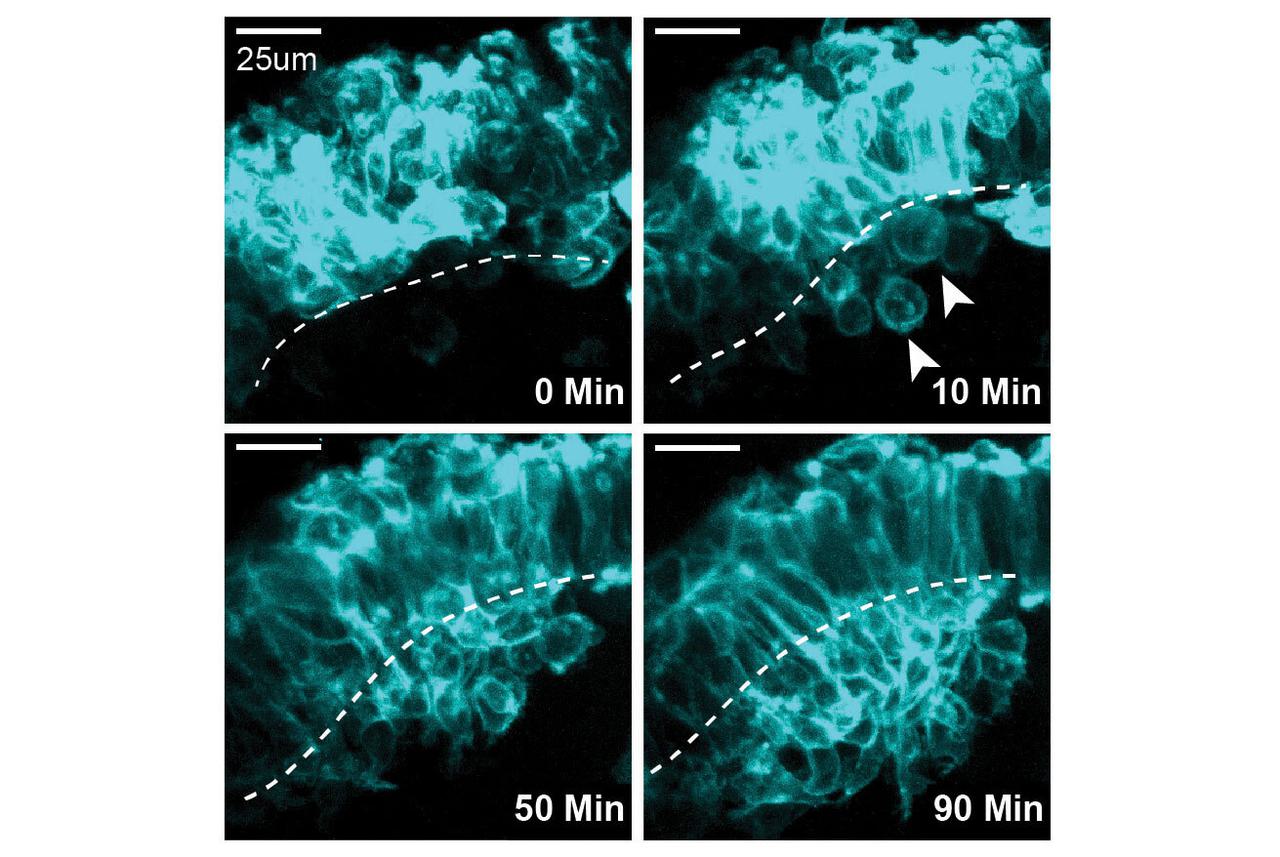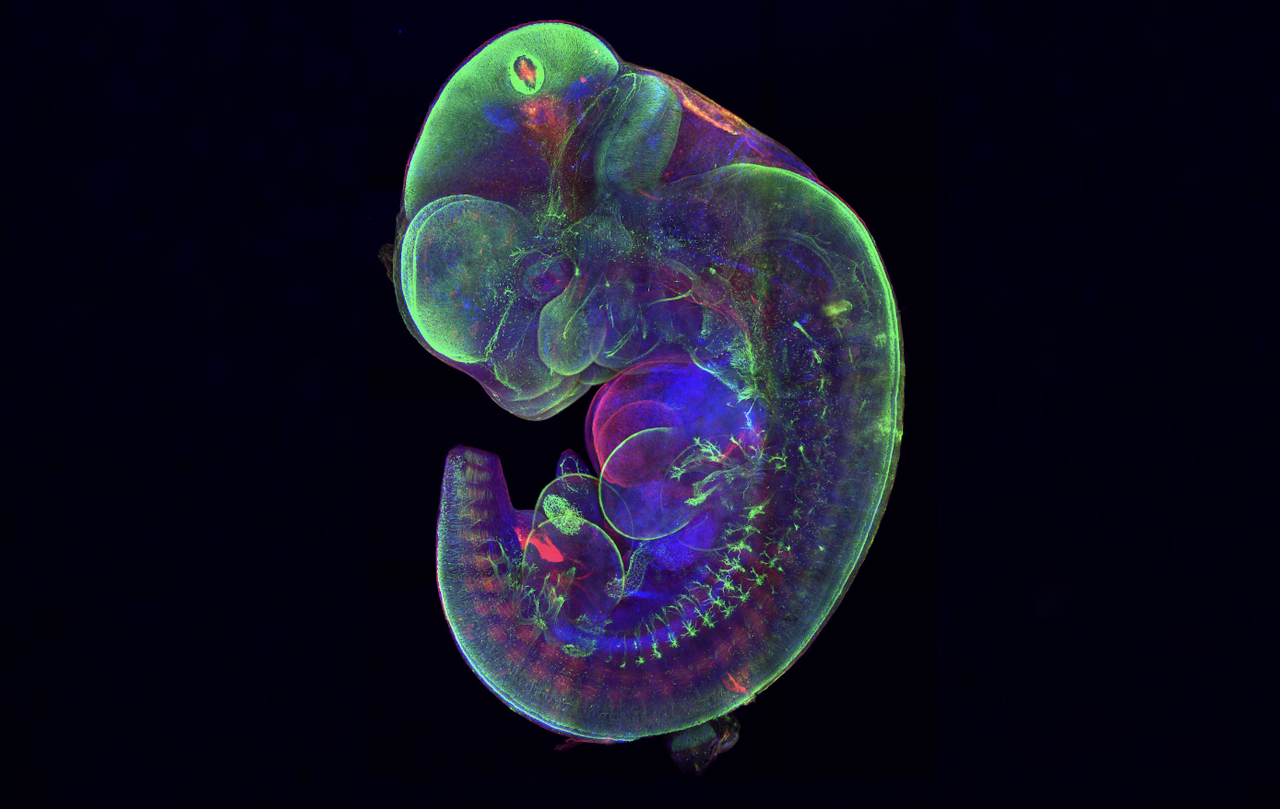News

13 March 2025
Stowers scientists discover new mechanisms for mobilizing neural crest cells during development
The findings deepen our understanding of craniofacial conditions and may have implications for cancer metastasis.
Read Article
Our focus is on how disruptions in ribosome formation and RNA transcription result in the death of neural crest cells that give rise to development of the head, face, and digestive tract.
Jump to:
Publications
Research Summary
Development and Regeneration, Evolutionary Biology, Molecular and Cell Biology
Zebrafish, Mice, Chicks, Chameleons
The Trainor Lab studies neural crest cells, cells which form in early development across research organisms, such as mouse, zebrafish, and chameleons. These cells migrate from the primitive embryonic brain and spinal cord to form the face, heart, and gut. Neural crest cells generate much of the bone, cartilage, and connective tissue of the head and face as well as neurons and glia in the peripheral nervous system.
Abnormalities in neural crest cell development can lead to congenital birth defects including craniofacial anomalies such as Treacher Collins syndrome (TCS), cardiac defects, and gastrointestinal tract malformations such as Hirschsprung’s disease (HD).
The lab has identified many genes and molecular mechanisms important to craniofacial development, primarily focused on TCS. Children with this condition often face years of reconstructive surgery that is never fully corrective.
The Trainor Lab also studies formation of the enteric nervous system which is responsible for gastrointestinal function. They demonstrated that the microenvironment of the embryonic gut is critical for proper formation. The lab additionally investigates the importance of gene-environment interactions in embryo development like genes that metabolize vitamin A, which is essential for proper lip, palate, ear, heart, limb and gastrointestinal development.
The Trainor Lab’s ultimate goal is to determine why specific congenital conditions occur and to identify the genes and the environmental factors or agents that cause them.
Principal Investigator
Investigator
Stowers Institute for Medical Research
Paul Trainor, Ph.D., a developmental biologist, is an Investigator at the Stowers Institute. Trainor joined the Institute in 2001, and is a leader in the fields of craniofacial, neural crest cell, and developmental biology.

Paul Trainor, Ph.D., a developmental biologist, is an Investigator at the Stowers Institute. Trainor joined the Institute in 2001, and is a leader in the fields of craniofacial, neural crest cell, and developmental biology.

The developmental disorder Treacher Collins syndrome, characterized by malformation of the ears, eyelids, cheekbones, and jawbones, rose to prominence with the book and movie Wonder, in which the main character has TCS.
In a 2006 PNAS study, the Trainor Lab discovered that when the gene Tcof1 is mutated in mice, many neural stem cells die, preventing the embryo from producing enough neural crest cells to properly build the head and face. Then, in a 2008 Nature Medicine paper, they showed that blocking the p53 gene, which promotes cell death, restores neural crest cells and rescues craniofacial abnormalities in Tcof1-deficient mice. “This work shows that we can intervene and prevent birth defects, not just repair them,” says Trainor. “And it’s great justification for basic research.”
News

13 March 2025
The findings deepen our understanding of craniofacial conditions and may have implications for cancer metastasis.
Read Article
News
13 September 2024
Learn biological basics of neural crest cells and why scientists at the Stowers Institute study them in our next #BioBasics episode!
Read Article
News

11 September 2024
The importance of foundational research for understanding and potentially addressing congenital conditions
Read Article
Dynamic regulation and requirement for ribosomal RNA transcription during mammalian development
Falcon KT, Watt KEN, Dash S, Zhao R, Sakai D, Moore EL, Fitriasari S, Childers M, Sardiu ME, Swanson S, Tsuchiya D, Unruh J, Bugarinovic G, Li L, Shiang R, Achilleos A, Dixon J, Dixon MJ, Trainor PA. Proc Natl Acad Sci U S A. 2022;119:e2116974119 doi: 10.1073/pnas.2116974119.
Dash S, Trainor PA. [published ahead of print June 29 2022]. Development. 2022;149.
Dash S, Bhatt S, Sandell L, Seidel C, Ahn Y, Krumlauf R, Trainor P. Front Physiol. 2020;11:531933. doi: 531910.533389/fphys.532020.531933.
Fu M, Barlow-Anacker AJ, Kuruvilla KP, Bowlin GL, Seidel CW, Trainor PA, FASEB J. 2020;34:10931–10947.
Diaz RE, Jr., Shylo NA, Roellig D, Bronner M, Trainor PA. Dev Dyn. 2019;248:709-727.
Watt KEN, Neben CL, Hall S, Merrill AE, Trainor PA. Hum Mol Genet. 2018;27:2628-2643.
